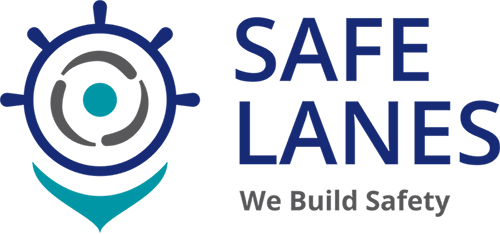
Work and Rest Hours – The facts of Shipboard Compliance
Mark Twain once said, “all you need in this life is ignorance and confidence; then success is sure”. This is very true in the shipping industry, where we ensure that seafarers confidently demonstrate compliance with the regulatory regimes while being ignorant about many important aspects of these. I often say that “seafarers are probably the most innocent set of people on this planet; the only problem is that they think they are very smart”. To be smart, one needs to understand the requirements and know how to remain on the right side of the requirements. Sadly, the industry does not create this awareness through the education of seafarers, and continues to suffer loss due to this.
The MLC 2006 and STCW 78, as revised in 2010, regulations pertaining to Work and Rest Hours is something that the shipping industry did not want, does not support and is doing little to ensure seafarer can comply. The irony of the situation is that even the person who this regulation intends to benefit, the seafarer, has been conditioned to believe that compliance is not possible and that this is, yet another regulation forced upon the industry.
IMO has highlighted the role of fatigue in maritime disasters, time and again, even going to the extent of augmenting the work being done in ILO by introducing mandatory requirements for seafarers to be given minimum hours of rest. Everyone knows that accidents are costly and need to be prevented. No one likes to get hurt, suffer loss or work in a fatigued condition. With MLC 2006 coming into force, the focus on compliance has increased and ships are often detained for repeated violations of regulatory requirements.
Through this article I will examine the various aspects that can ensure compliance with the work and rest hour regulations and thereby prevent seafarers from falling foul of the law.
- Know the Law
ISM Code 6.2.1 and 6.4 requirements to ensure “seafarers are qualified and certificated to national and international requirements” and “have an adequate understanding of relevant rules, regulations, codes and guidelines”, should in normal course of events ensure that seafarers are familiar with the regulations pertaining to hours of work and hours of rest and can apply them in practice. However, this does not happen as the regulations are not part of seafarer training syllabus.
While seafarers may know the minimum requirements, which is 10 hours of rest in any 24-hour period in no more than 2 rest periods with one period of 6 hours, and 77-hours of rest in any 7-days period, they may not necessarily know how this is to be applied or measured. Most seafarers believe that 100% compliance is the norm and any violation would result in some form of reprimand from the Company or Industry.
MLC Regulation 2.3 has been drafted considering the fact that seafarers could be called out for work during their scheduled periods of rest and may have violations from such call outs. MLC Standard A2.3 para 8, 13 and 14 provide the actions that can be taken in case of such work, which cannot either be planned for in advance or avoided when the situation develops. When seafarer takes appropriate action as provided in these paragraphs, no nonconformity should occur.
More than 80% of the rest hour violations occur due to lack of familiarity with the regulation and its application. Companies that train their seafarers in rest hour regulations have fewer violations and thereby significantly better rest hour compliance and safety record. Make work and rest hour regulation training part of every seafarer’s “induction training”.
- Know the Rest Hour Software
ISM Code 6.5 requirement to ensure that seafarers are provided training that is required in support of SMS should in normal course of events ensure that seafarers are familiar with the software used on ships to comply with this regulation. Unlike most software that require only few people to use it, the rest hour software is intended to be used by every seafarer. Lack of familiarity with the software can result in improper set-up and inadequate use for planning and recording.
The rest hour record signed by the seafarer and master is a Legal Document. Hence, every seafarer must be made responsible for maintaining their records in the rest hour software and for preventing any unauthorized alterations to these records.
The person appointed as the administrator for the software must be well versed with its features and must ensure that no errors are made. Hence, they need to be trained in the full capabilities of the software. Anyone monitoring the software onboard or ashore must also be appropriately trained to detect errors and ensure they are corrected.
Errors made in rest hour software can be seen in the Table of Shipboard Working Arrangements and/or Record of Rest Hours and are easily picked up by trained inspectors. This can lead to more detailed inspections of the work and rest hour regulation compliance on board.
- Adequacy and Management of Manpower
It is not necessarily the number of people on board that determine the compliance. In many cases it has been observed that unplanned or improper usage of existing manpower is the real cause for the violations. Having a systematic approach towards human resource management on ships can enable companies decide which ships need additional manpower and which do not.
MLC Standard A2.3 para 10 and 11 require the planning of work and rest hours for “each position” on board to ensure that they get the minimum rest required by law. The below methodology can help a company evaluate if there is adequate manpower on a ship:
- Step 1 – Compare the record of rest hours with the Table of Shipboard Working Arrangement (SWA) to ensure that there is a correlation between the two. In case of significant deviation or repeated violations, identify and implement the change that is needed in the working schedule and amend the SWA suitably. Ensure that workload is equally distributed between the team members and no seafarer has to work more than 330 hours in a month.
- Step 2 – Operations that cause repeated violations should be reviewed to identify alternative options available within the existing manpower on board. This may require the Master, Chief Officer and Chief Engineer to take short stints of watchkeeping or other active participation in shipboard operations to provide rest to other officers. Consideration can also be given to keeping people on call when not required to actively supervise or participate in an operation. Master can also consider controlling the loading / discharging rate to provide adequate time for seafarers to rest.
- Step 3 – If all attempts of the Master to prevent repeated violations fail, then Company should be involved to find a solution. The solution can be:
- If the operation causing violation is carried out regularly, consideration should be given to increasing manpower. Care should be taken to identify the ranks that are most affected so that additional manpower can reduce the workload on such ranks.
- If the operation causing violation is to be carried out occasionally, consideration can be given to working out a solution with charterer / terminal on how to manage the workload basis available manpower. This may mean agreeing on time required at berth / sea or between back-to-back operations to provide rest to crew on board.
- If neither of above is possible then Company should review this situation with Flag State and Seafarer Representatives.
- Commercial issues
Commercial pressure is often the reason cited for violations. Cargo operations are the single highest reason for rest hour violations.
Shipping, like every other business, has its deliverables based on contractual agreements. Even a person who hires a taxi expects the driver to take him/her to the destination in shortest time possible and at the lowest cost. However, that does not mean that the driver is expected to break the rules of the road to satisfy the customer.
The law to ensure seafarers are provided “adequate rest” and are “fit to perform their duties” when they commence work, is part of national legislations for most flag states. The requirement to remain in compliance with the law is built into all contracts. Some of the methods that can be adopted to ensure this are:
- IMO has provided for some exceptions in STCW, as amended in 2010 (called Manila exceptions) to cater to situations that cause violation of the “minimum 77-hours of rest in any 7-days period” or “no more than 2 rest period”. Ship-owners must ensure they are able to apply these by including the Manila Exceptions in the Collective Bargaining Agreements (CBA) and Declaration of Maritime Labour Compliance (DMLC) part I and II.
- The exceptions to the limits of hours of work and hours of rest prescribed in MLC Standard A2.3 para 13 can provide a solution to such issues. For example:
- It is a recognized fact that seafarers on ships that regularly transit long river or lake systems are challenged in their ability to comply with the rest hour regulations. A study of this operation can identify what would be the most effective method of dealing with operations and preventing fatigue from the time a ship enters the river or lake system till such time it exits. This method could then be adopted within Collective Bargaining Agreements (CBA) of the companies that operates ships in this region and applied through involvement of Flag State and amendment of Declaration of Maritime Labour Compliance (DMLC) part I and II.
- Defining the term “short voyage” used in MLC Standard A2.3 para 13 can help ships that call two or more ports in a 24-hour period. If seafarers on such ships have one period of 6 hours rest in the 24-hours from the time ship makes fast at first port they can be considered in compliance provided they have 77-hours of rest in any 7-days period. Such a solution could help container ships, car carriers, Ro-Ro ships continue their operations without fear of breaking the law.
- The concept of ETA being given to all service providers is outdated. The company should ensure that Master is involved in scheduling of services that ship needs while in port or at anchor. This can greatly reduce the violations caused due to simultaneous operations and services that not only cause undue stress but also create additional risks. The Master should have confidence to re-schedule a service where it is likely to cause violations as per original plan without fear of adverse repercussions.
- Company should be able to work with charterers and operators without fear of “breach of contract” to find solutions to special circumstances of a trade. Open communication can allow each party to ensure that all interested parties in their supply chain are informed of change in program so that commercial losses are avoided or minimized. It is in everyone’s interest that seafarers comply with the work and rest hour regulations.
- Role of Safety Management System (SMS)
In recent times, when ships are detained for repeated violations of rest hours, the detention is invariably linked to ISM Code element 6 and 9. While element 6.2.2 deals with adequacy of manpower, element 9 deals with the procedures that enable the organization learn from its own experience and the experience of others.
It should be remembered that ISM Code came into force earlier than the rest hour regulations. The safety management procedures do not always consider the rest hour regulations, due to which the violations occur. It is therefore important for every company to review the rest hour violations in light of the procedures governing the operation and identify areas where improvement is needed to prevent recurrence due to desire to show compliance with SMS. Analysis of the rest hour records can reveal the operations / activities that cause repeated violations.
The Company needs to ensure that contents of SMS, DMLC-II and CBA complement each other to ensure seafarers are provided with adequate rest and not fatigued from the operational requirements of the ship.
The Company should also ensure that compliance is monitored at different levels:
- Level 1 – Seafarers should monitor themselves each day to verify if they will remain in compliance over a 24-hour period from the time of commencing work. In case of anticipated violations, they should not hesitate to discuss the situation with their superior.
- Level 2 – Head of Departments should randomly sample seafarer records of rest hours once a week to confirm if these are being entered regularly, are accurate in light of operations carried out by the ship and action has been taken in accordance with the regulation in case of violations. Any concerns noted should be discussed with the seafarer and where required, reported to Master and/or Company for further action.
- Level 3 - Master should check the seafarer records of rest hours thoroughly prior signing the hard copy. It should be remembered that the rest hour record is a legal document that has far reaching consequences for the seafarer and the Company in case it is not correctly maintained or does not represents the facts. Any concerns noted should be discussed with the seafarer / Head of Department and where required, reported to Company for further action.
- Level 4 – Company should have access to seafarer rest hour records on each ship and a method of setting alerts whereby the responsible persons in the organization are informed of violations that require further investigation or company involvement.
- Level 5 – Verification of seafarer record of rest hours by auditors and superintendents during ship visits through random sampling method.
- Breaking the Myths
- Violations are not acceptable – Even IMO and ILO recognize that the nature of shipping is such that despite best efforts of the seafarers, occasional violations can occur. It is “normal” for a ship to have occasional violations. Having no violation month after month is “abnormal” and shipboard management should recognize this. Rather than fear violations, shipboard management must focus on planning, monitoring and factual recording of work and rest hours.
- Every violation is a Nonconformity – The definition of Nonconformity (NC) used in shipping industry is from the ISM Code. A nonconformity occurs when “objective evidence indicates nonfulfillment of a specified requirement”. If despite best efforts of seafarer, a violation occurs due to situation that was not anticipated or could not be avoided (and there are bound to be such situations), and the seafarer takes action in accordance with MLC A2.3 para 8, 13 or 14, then no NC should occur. Seafarers should know when and how to apply the concept of compensatory rest.
- Inspectors want to see clean records – The inspector is required to verify compliance with the regulations. Concern is generated where good intention and efforts to comply with the work and rest hour regulations cannot be evidenced. The level of concern determines the action taken by the inspectors. There is a slight difference in the approach of a Port State Control (PSC) inspector and a Vetting inspector. While the PSC inspector would like to check why the violation occurred and what was done to remain in compliance with the regulation and prevent recurrence, the Vetting inspector is guided by the OCIMF Vessel Inspection Questionnaire (VIQ), which requires them to record an observation in case there are 3 or more violations per individual seafarer in a calendar month.
- It is okay to adjust rest hour records - Master’s should not allow the fear of a vetting inspection observation be a reason to adjust rest hour records. A rest hour record is a LEGAL DOCUMENT and submission of a legal document to authorities constitutes a crime. When the seafarer has taken the action in accordance with the regulation, there should generally no concern be raised by the vetting department of an oil company if a seafarer has more than 3 violations in a month. In case there are numerous seafarers having repeated violations, then the Master should conduct a safety meeting to review the conditions that caused the violations and identify how these can be prevented should the operation be done again. Where Company support it required, it should be clearly mentioned and sought. The decision taken in safety meeting must be implemented to demonstrate good intent to prevent recurrence.
The law to prevent fatigue in seafarers is here and it is now up to the industry to align their practices to ensure seafarers get adequate rest. The solutions mentioned in this article are workable and have shown results in companies that have implemented them.
About the author:
Capt. Sanjiv Sehgal has been in the shipping industry for 39 years. He has been working ashore since 1993 and has been closely involved in development of management systems and procedures to implement ISM code, ISPS code and Maritime Labour Convention. He has held senior management positions in companies dealing with ship management, maritime consultancy and training.
As an ILO certified MLC 2006 Train the Trainer and Inspector, he continues to work closely with shipping industry to develop solutions to practical issues faced by the companies on MLC 2006 matters. His guidance and training on regulation pertaining to management of rest hours has greatly improved the performance of numerous companies. He can be contacted on: sehgals@vggroup.biz





